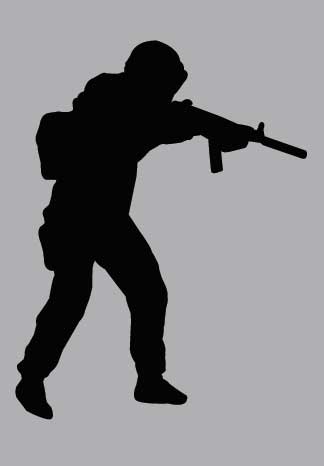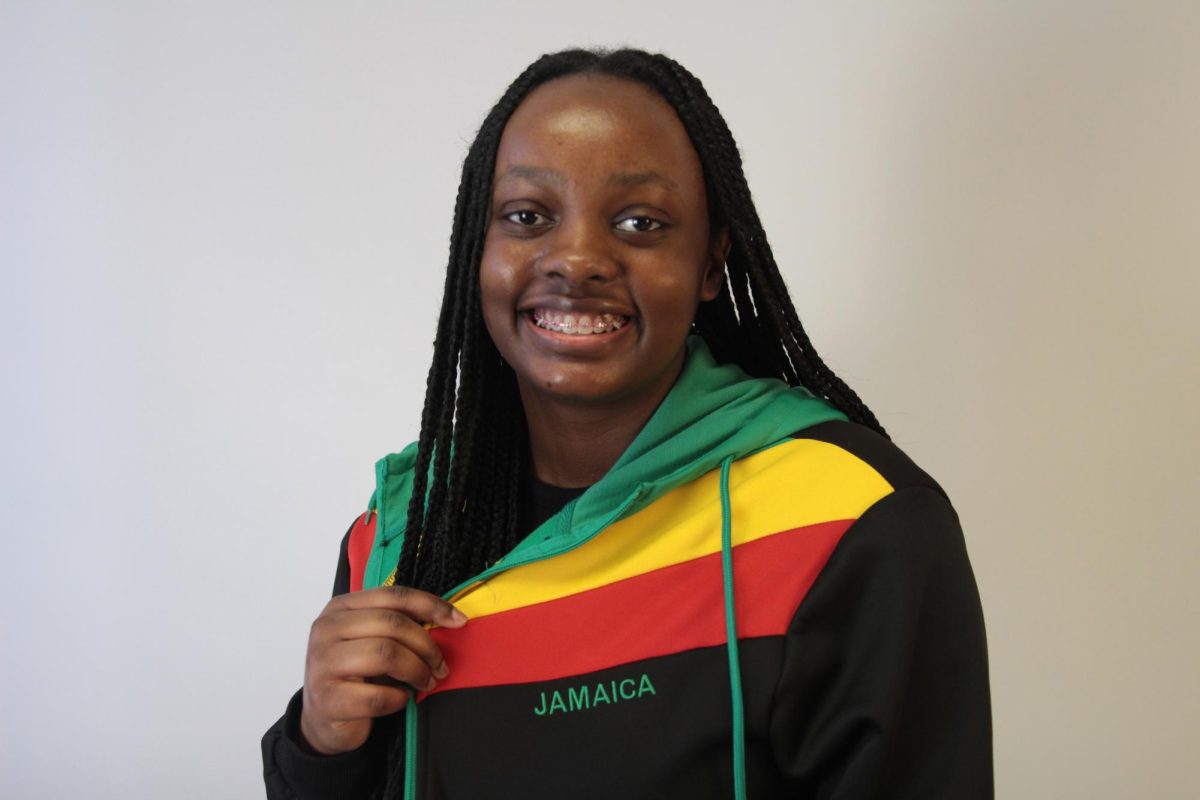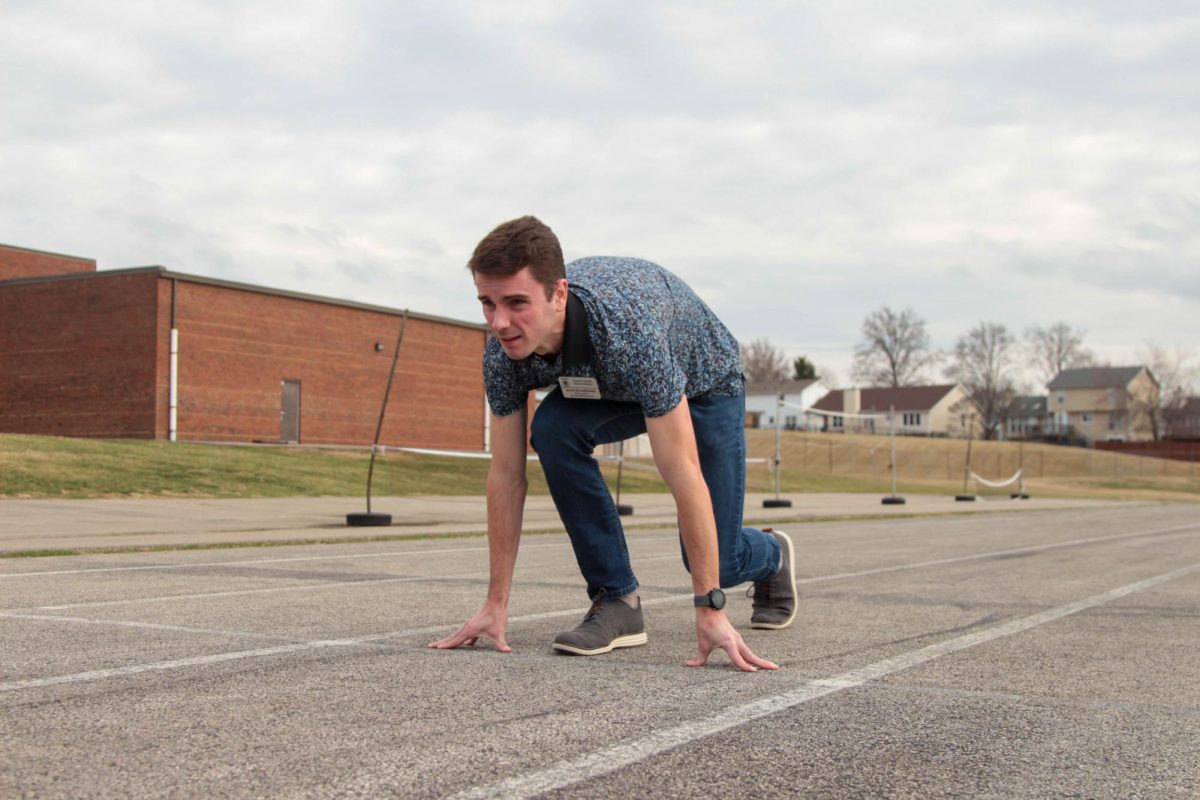 Black and white Sheriff’s Department cop cars from five different municipalities file through the safety gate and into the parking lot of the Sheriff’s Department Training Center and Firearm Range in Defiance, MO. It’s 4:15 p.m., and the 30 members of the SWAT team change their clothes right there in the parking lot across from the empty briefing classroom as they gear up for their ammunition and night vision training. They pack on their gear, costing $11,772 per officer, as they crack jokes and make fun of each other like siblings. A black Sedan pulls into the lot. Suddenly, all is quiet among the men as Special Force Captain Dave Todd steps down out of his personal headquarters on wheels to address his trainees.
Black and white Sheriff’s Department cop cars from five different municipalities file through the safety gate and into the parking lot of the Sheriff’s Department Training Center and Firearm Range in Defiance, MO. It’s 4:15 p.m., and the 30 members of the SWAT team change their clothes right there in the parking lot across from the empty briefing classroom as they gear up for their ammunition and night vision training. They pack on their gear, costing $11,772 per officer, as they crack jokes and make fun of each other like siblings. A black Sedan pulls into the lot. Suddenly, all is quiet among the men as Special Force Captain Dave Todd steps down out of his personal headquarters on wheels to address his trainees.
Captain Todd, age 57 and a Normandy High graduate, assembles the two platoons that make up the Special Weapons and Tactics (SWAT) team, Alpha and Bravo, and gives the safety briefing, along with Lieutenant Koch.
“Don’t be stupid, guys,” Koch repeats.
The men begin to file into the briefing classroom stationed right on the shooting range. Every person in the cramped classroom must recite the rules and regulations before being allowed in the shoot house. There is no room for mistakes when one’s job is to protect the lives of others.
“Number one?” Koch asks.
“All firearms are treated as loaded,” the men respond in unison.
Number two: Never point your weapon at something unless your goal is to destroy it.
Number three: Keep your finger off the trigger until ready to fire.
Number four: Be aware of your target and your surroundings.
Number five: Obey all range commands.
One must have been a part of an enforcement, such as a patrol police man, for at least two years before even being considered for the team. Then the officer in question may put in a request to become a part of the team. However, the average member has been a part of another enforcement for five years before being picked up by Captain Todd. Being a part of SWAT is serious business for all the men, including the captain.
“We’re the people the cops call for help,” Captain Todd says. “As soon as we hear the words bomb or gun, the situation is ours.”
Captain Todd leads the Bravo platoon to the shoot house along with the two team leaders, Officer Dehart and Officer J. Ochs. Being set up like an actual houses, with rooms and cardboard dummies with guns in hand, the officers get legitimate practice shooting at armed suspects, breaking down heavy doors and rescuing hostages. This drill may just be practice, but it involves all the seriousness of a real, dangerous scenario. The drill is done about six times per platoon, in pitch blackness; the team is practicing with their new night-vision technology. The medics also use this time to practice inserting IVs into the “victims.” They do this in complete darkness with gun fire going on around them.
Boom, boom, boom. Three shots and the target is down.
“Groin, torso, head,” Captain Todd explains. “We don’t aim to slow. We aim to stop.”
While the Bravo platoon is in the shoot house, the Alpha platoon, along with their two team leaders, Officer D. Baker and Officer C. Layton, are out on the field doing target practice. All 15 men stand, practically shoulder to shoulder, as the head of the shooting range, Sargent Bush, yells out his commands.
“Hand gun in the right hand,” Sargent Bush explains over the loudspeaker. “You get six shots, three up and three back down. Switch magazines [reload the gun], and do it with the other hand. Do it as fast as possible. Go.”
The smell of gun powder infiltrates the noses of the medics, who accompany the team on all of their calls, and shells scatter to the floor, making an unmistakable clinking noise. All that can be seen is the brilliant light spewing from the guns, and the smoke filling the night sky. Captain Todd holds everything together.
Captain Todd oversees everything SWAT. He is in charge of all the men on the team; they all answer to him with utmost respect. Everything is “Yes, sir,” or “Yes, Captain.” Currently, there are no women on the SWAT team. According to Captain Todd, this is because of the lack of interest from women and the rigorous training. The members must attend eight hours of firearm training per month and eight hours of tactical training per month. They must also pass a physical fitness test four times a year. This test includes job related challenges; the things being tested may have to be done when answering a call.
“You have to be built,” Captain Todd says, “But we like having brains too. We look for smarts, thinkers. They have to keep a cool head and be able to keep control of themselves. We do make them stronger and a better shot, though.”
The team is accompanied by at least two paramedics at all times from their own paramedic team, headed by Doctor Tan. In addition, six to eight crisis negotiators accompany the team on every call. They talk to suspects, and 98 percent of the time they can talk a dangerous character out of doing the wrong thing, according to Captain Todd.
As the two platoons cycle through the different drills numerous times, the medics and snipers go through all of their gear. Sniper Commander and Alpha team leader Officer Baker is in charge of the five-man sniper team. These men are county marksman who specialize in accurate shooting. They provide intelligence for the team when out on calls, and they keep eyes on suspects, or in some cases the suspects children, at all times. Officer Baker believes that these men have a very strong bond.
“We’re all a real close family,” Officer Baker says. “We all trust each other with our lives, even though we’re all from different departments.”
The 30 men that make up the SWAT team come together from five different departments in St. Charles county: Wentzville, O’Fallon, St. Peters, Lake St. Louis and St. Charles County Sheriff’s Departments. The team practices some of their drills in middle and high schools around the St. Charles County area to prepare themselves for situations such as lock-downs in schools.
At around 9 p.m., the team will wrap up this training session and begin cleaning their weapons. The group becomes a little more relaxed as the team jokes around and discusses weekend plans. This will take about an hour, and then the team is free to go home to their families. According to Captain Todd, the officers are not allowed to leave the training center with a dirty weapon, because they could be called at any time.
“This is our goal: it’s our life or yours,” Captain Todd said. “We work for you. We’re it, and we don’t leave until we work [the situation] out.”
by Elizabeth Diggs




![FHN Holds Prom at Old Hickory Country Club [Photo Gallery]](https://FHNtoday.com/wp-content/uploads/2024/04/Brewer_stopmotion-9-300x200.jpg)


![FHN Students Watch the Solar Eclipse [Photo Gallery]](https://FHNtoday.com/wp-content/uploads/2024/04/4.8.24-solar-eclipse_-300x200.jpg)






